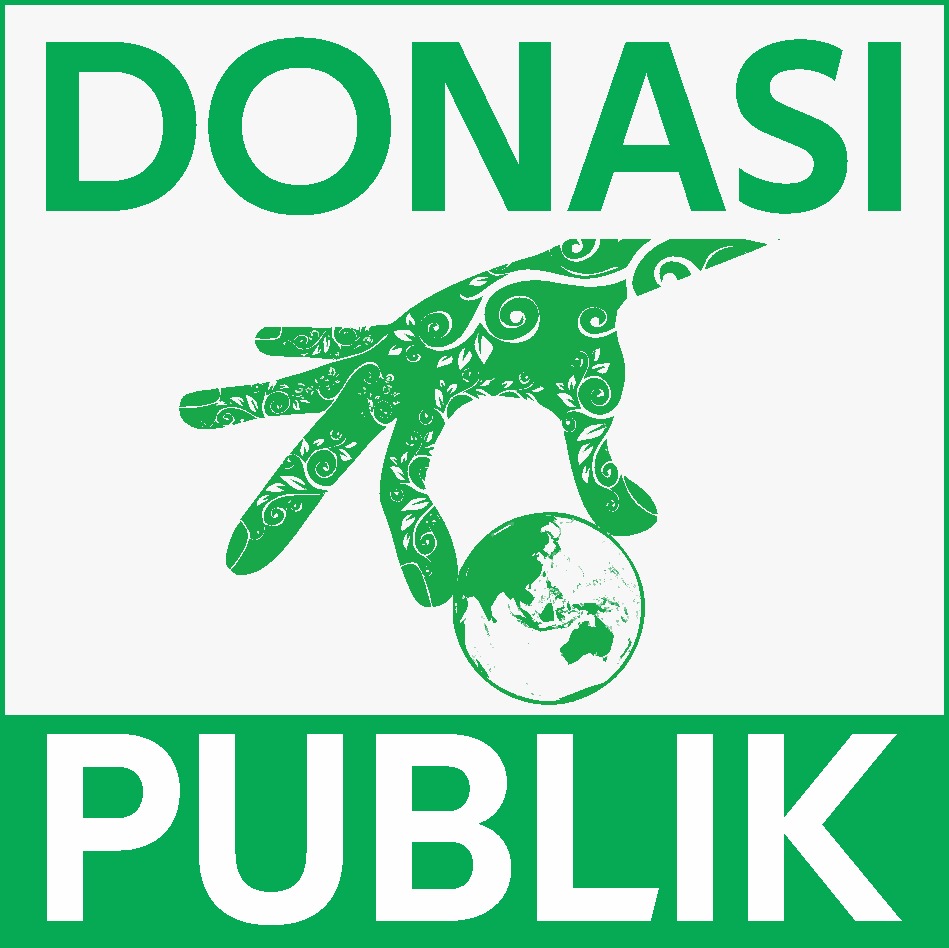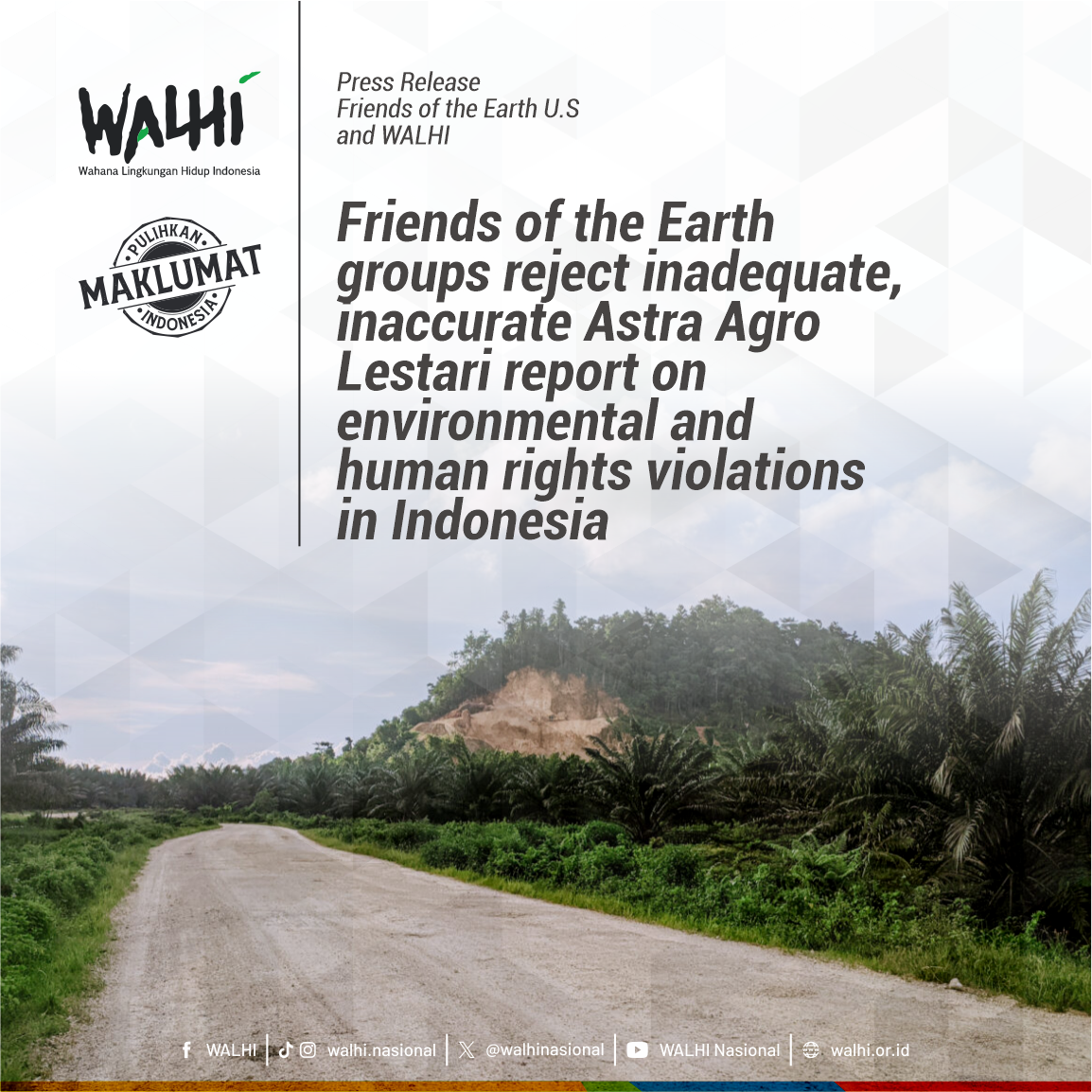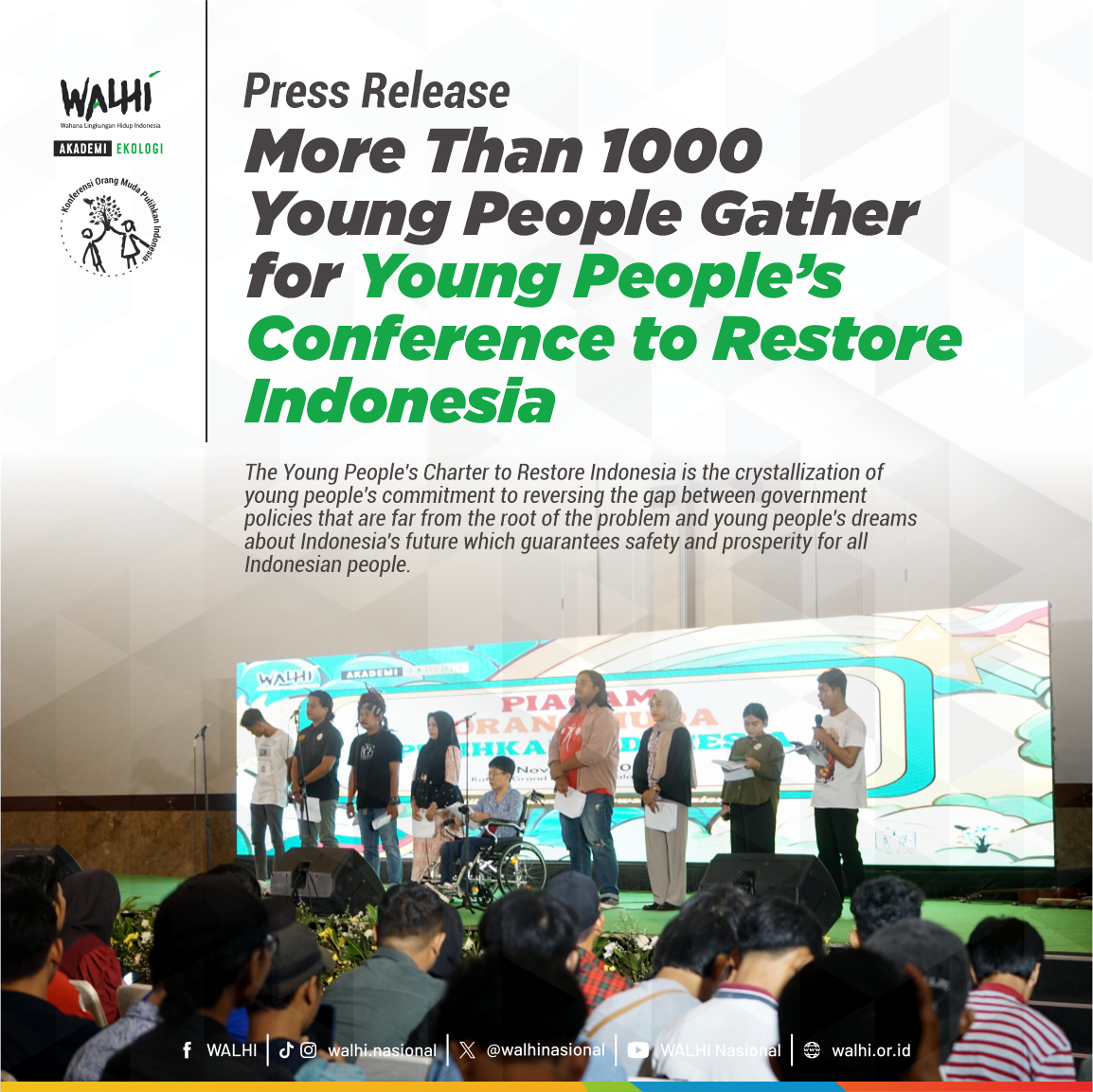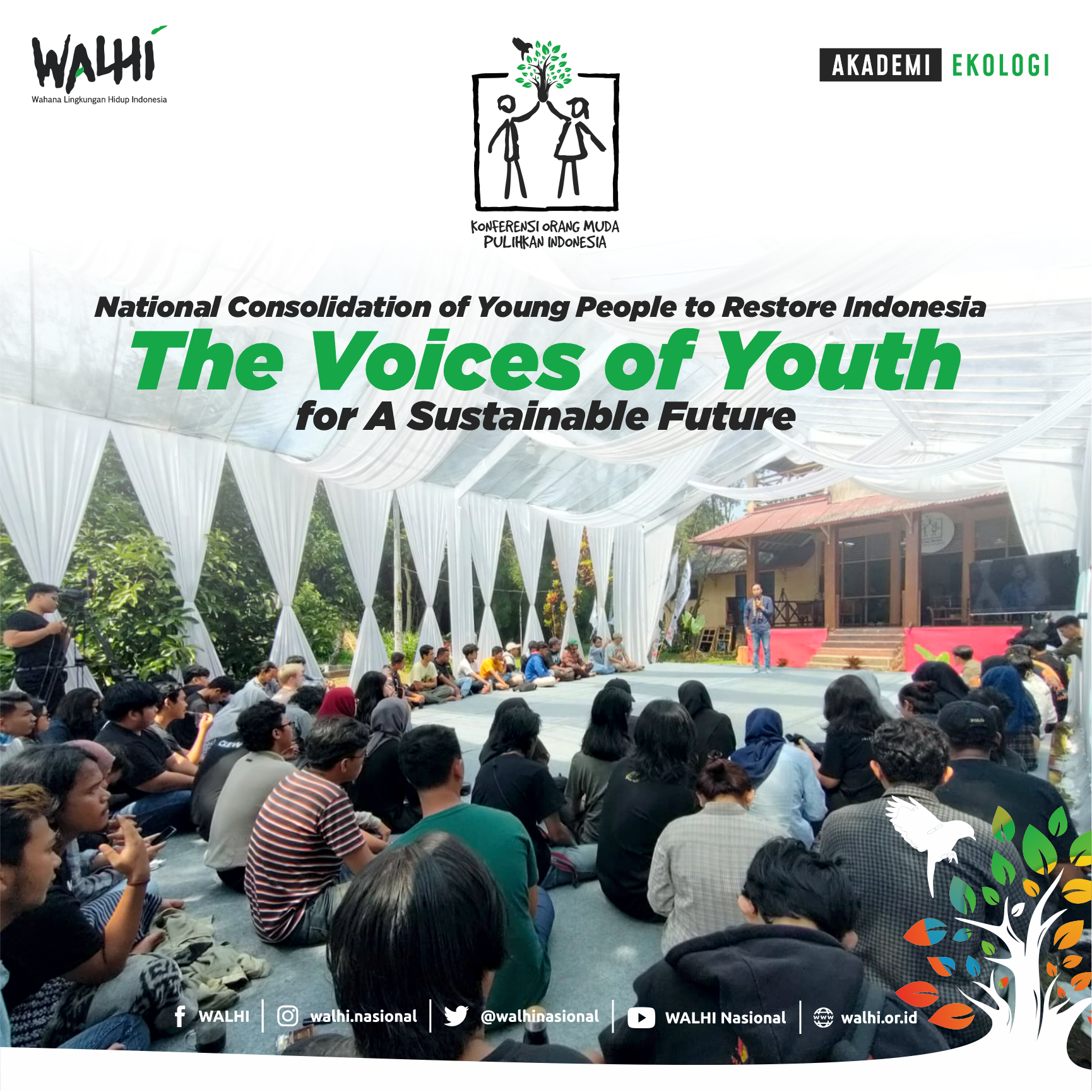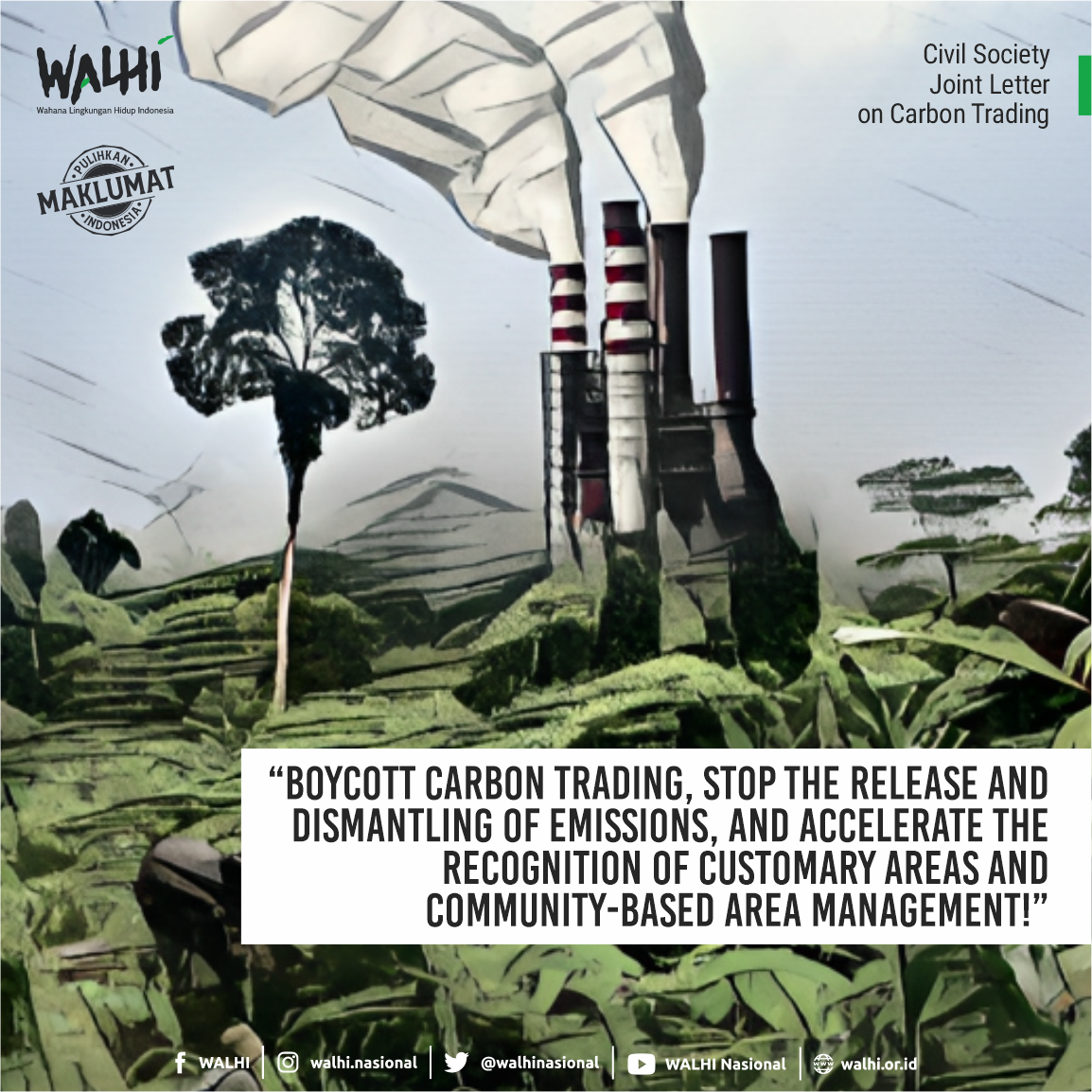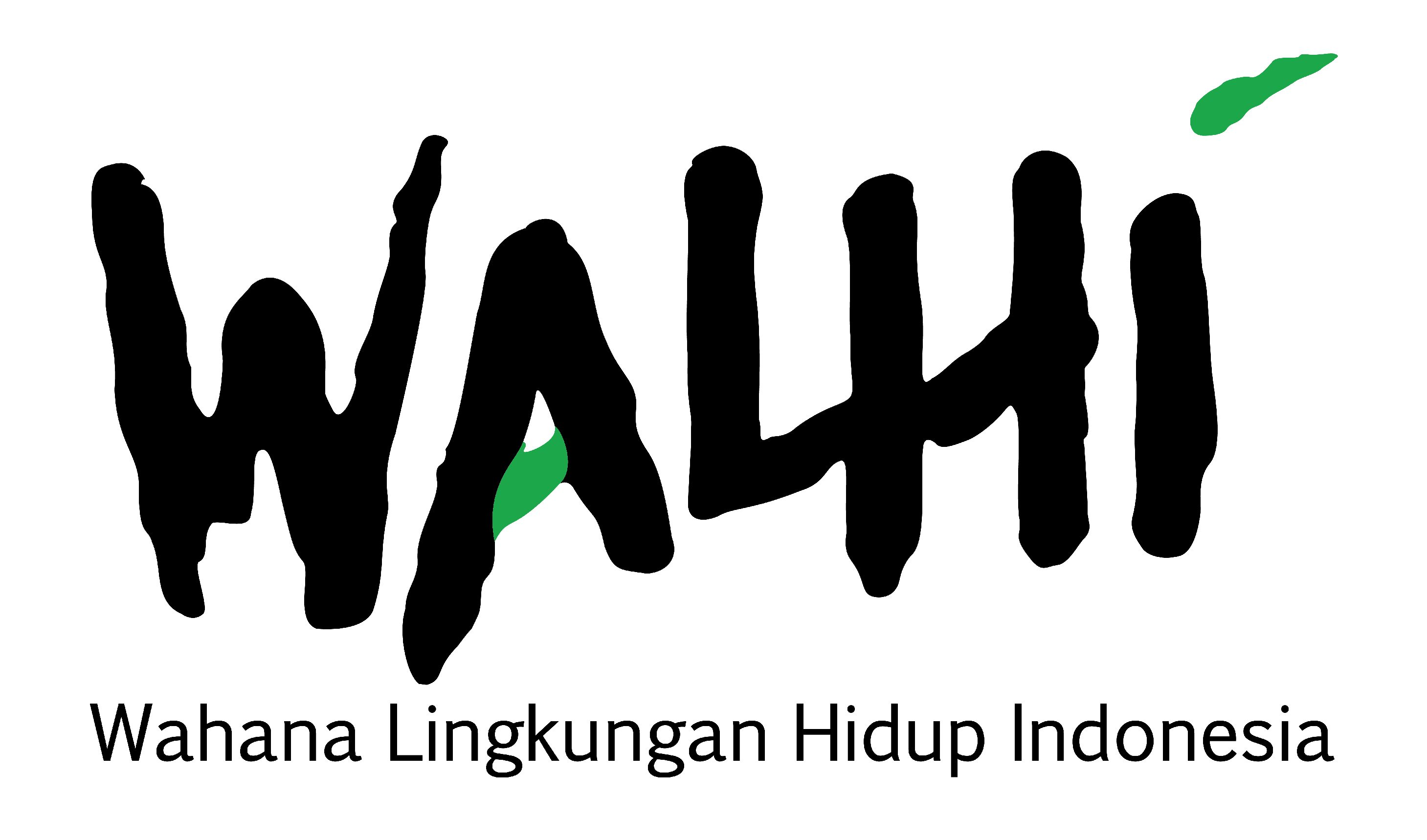As the oldest environmental organization in Indonesia, WALHI has a long record, and here is a summary of its extensive history.
After two months as Minister of the Environment, Emil Salim spoke with several friends, such as Bedjo Rahardjo, Erna Witoelar, Ir. Rio Rahwartono (LIPI/ Indonesian Institute of Sciences) and Tjokropranolo (Governor of DKI Jakarta) discuss how the environment should become a social movement. "I want a snowball about the environment to get larger," Emil said at the time (interview - personal).
Moreover, Emil Salim felt he had to learn about the environment because he saw that the environmental issue was new and unpopular in Indonesia. He wanted to get involved in the community to know about environmental problems and find solutions for the community. For this reason, he has to find a way so that the snowball called 'environment' rolls bigger.
In informal discussions with his friends, Emil Salim has no choice but to ask for help from NGO groups and environmentalists. Emil hoped they could help solve several environmental problems because of their close relationship with the community. Thus, the government can convey its program to the community through them. People who cannot bring their requests to the government can also present them through NGOs.
Emil Salim's huge wish touched his friend, Tjokropranolo, who was the Governor of DKI. One afternoon, Tjokropranolo offered to use a room to meet with NGOs from all over Indonesia. Tit for tat, without thinking twice, Emil Salim instantly accepted Tjokropranolo's offer to hold a meeting for NGOs throughout Indonesia. The meeting was held on the 13th Floor, City Hall (Office of the Governor of DKI Jakarta), Jalan Merdeka Selatan. Unexpectedly, around 350 organizations attended that meeting, consisting of professional organizations, hobbyists, environmental institutions, conservationists, religious institutions, researchers, campuses, journalists, and so on. At that moment, Emil Salim expressed all his wishes that the government and NGOs must work together to create a healthy environment and that the community must help government programs in the environmental sector.
Abdul Gafur (was a Minister of Youth and Sports) visited the meeting. Reportedly, he wanted to know what the NGOs would do and their response to the government. To avoid making the meeting useless, they were looking for ways to maintain shared commitments and communicate effectively between them. Towards the end of the event, an agreement emerged to select ten NGOs that would assist government programs in the environmental field. The ten organizations were then called the Group of Ten. Initially, this group was called the Joint Secretariat of the Group of Ten. However, George Adjitjondro refused, arguing that the Joint Secretariat sounded like Golkar's underbow. He finally suggested the name Group of Ten. And from that 13th floor, The Group of Ten was born, the seed of WALHI.
To prevent the perception that this organization is a political organization, it changed its name to the Group of Ten for Environmental Development, declared on 23 May 1978 at City Hall. The Group of Ten was a forum to exchange information, share ideas, and formulate joint programs on environmental issues in Indonesia and the world to maintain environmental sustainability for the living organism in general and human life in particular.
Members of this group were: the Association of Indonesian Landscape Architects (IALI), chaired by Ir. Zein Rahman; Green Indonesia Foundation (YIH), chaired by Dr. Fred Hehuwed; Biology Science Club (BCS), chaired by Dedy Darnaedi; Bulungan Youth Center chaired by Bedjo Raharjo; Indonesian Bird Association (PBI) chaired by H. Kamil Oesman; The Association of Plant Lovers (PPT) chaired by Mrs. Mudiati Jalil; Science and Technology Journalists Group chaired by Soegiarto PS; Headquarter of Indonesian Scout Movement by Drs. Poernomo; Association for Environmental Sustainability (HUKLI) by George Adjidjondro; and Srutamandala (Publication College). Along the way, Srutamandala did not meet the organization's membership requirements due to the nature of their activities was individually, even though there was an organizational form. This brings the total to nine organizations.
They felt that they still need members and must add several organizations so that they have more power to carry out actions. For this reason, they added additional members to the Group of Ten for Environmental Development. Which later joined: the Nature Conservation Education Foundation, chaired by Mrs. Aziz Saleh; The Indonesian Consumers Foundation, chaired by Zumrotin; Indonesian Commercial Private Radio Association (PRSSNI); The Research Institute for Economic and Social Education and Information (LPES), chaired by Ismed Hadad; Indonesian Architects Association (IAI); and Sinar Harapan Daily represented by Winarta Adisoebrata. Although the membership is no longer ten, the name has been retained to honor the ten founding organizations.
This group is chaired by Ir. Zein Rachman (IALI), with Secretary I, namely Dedy Darnaedi (BSCc), and Secretary II, Bedjo Rahardjo (GRJS-Bulungan). They worked in a room in the PPLH office to carry out its activities, bridging the government and other NGOs as their primary task (Tanah Air, October 1984, No. 43, Year IV, pp. 6-8). Several NGOs became a volunteer to assist Emil at the new office. In the mid-1980s, the press reported pollution in Jakarta Bay, which shocked the public, including environmental activists. This case received an extraordinary response from the public, especially when research into the deaths of several children in Jakarta Bay indicated similarities with the incident in Minamata, Japan, where they died from Mercury.
Apart from that, a seminar was also held in Jakarta on the dangers of Mercury/Hg and pollution of Jakarta Bay by inviting Professor Harada from Japan. Dr. Meizer was a doctor who was observing with Group of Ten at that time. The case received responses from Commission X/DPR, State Minister for Development and Environment Monitoring (PPLH), DKI Regional Government, and doctors. As a case comparison, the Group of Ten was invited to visit the victims in Minamata, Japan. They also continued to raise public awareness about the dangers of Mercury/Hg. In addition to working on Jakarta Bay, Group of Ten also conducted research and mentoring activities for the Dukuh Tapak community, Semarang, whose water was polluted by factory waste, causing reduced soil fertility and severely damaged rice field irrigation. However, the NGO group felt that the presence of this group had not fulfilled their desire to make it a forum for environmental activities and felt the need for a forum to socialize the environment to the community. The Group of Ten then held the first National Environment Meeting (PNLH I), which later brought WALHI into the world.
On the Group of Ten initiative and the support of Sri Sultan Hamengku Buwono IX through the Indonesia Wildlife Fund, they discussed the possibility of a broader NGO meeting to respond to more extensive issues. Since the beginning, they realized that environmental issues involved complex problems, so several NGOs with environmental programs decided to meet in a national forum.
At a luncheon, Emil Salim, Soerjani, and Erna Witoelar agreed to include the NGO national meeting forum in Jakarta's first Conference of the Center for Environmental Studies (PSL). Not only the Group of Ten, who seemed enthusiastic about preparing for the event, but also other departments. More than that, Emil Salim even reported the plan to Soeharto. In his press conference, Emil said that the forum was intended to exchange ideas so that these organizations could actively participate in environmental development in Indonesia.
On the other hand, PPLH, the Ministry of Public Works (PU), the Ministry of Mining and Energy, the Ministry of Health, and the Ministry of Agriculture could work together so that this group act as a bridge between government officials and the community in handling environmental issues. Thus, it was hoped that there would be "shortcuts" so that environmental problems could be "popularized" in a short time (Kompas, October 8, 1980, page 1). The World Wildlife Fund, chaired by Hamengkubuwono IX, sponsored the meeting. In addition, several names appeared and gave their support, such as Purnomo (Minister of Public Works), Soedjarwo (Minister of Forestry), and Emil Salim (Ministry of Environment).
They provided not only immaterial support but also financial. About ten million rupiahs were collected from crowd funds between friends. At that time, Erna Witoelar and Nasihin Hasan took money from WWF given by Soedjarwo (the Minister of Forestry and WWF's treasurer). The meeting took place on 13 – 15 October 1980 at the YTKI Building, held concurrently with the Indonesia-wide Conference for Centers for Environmental Studies (PSL). The meeting was attended by 130 participants from 78 organizations of three groups: community organizations (religious, social), environmentalist organizations, and professional organizations. Prominent figures at that time included George Junus Aditjondro from Bina Desa, MS Zulkarnaen from the Mandiri Bandung Foundation, Soetjipto Wirosardjono from Indonesian Family Planning Association (PKBI), Rudy Badil from The Universitas Indonesia Nature Lovers (Mapala UI), and Zen Rahman from IAI.
There were Otto Soemarwoto, Hasan Poerbo, Soeratno Partoatmodjo, Abu Dardak, and others from the campus’ PSL. The meeting was tough. Some participants from the nature lovers community and campus activists suspected that the umbrella organization was not much different from, for example, KNPI (Indonesian Youth National Committee) and other organizations formed and mobilized by the Government. The agreement on the organization name that would become the forum for the attended NGOs was deadlocked. Thursday afternoon, before closing, the organization's name still needs to be obtained. Erna Witoelar, one of the committee members, looked panicked, pacing back and forth, occasionally wiping the sweat from her forehead and cheeks.
Her face looked tense. She and some of the committee that initiated the meeting were confused. The NGOs that initially seemed to agree with the goals, turned out to be back with the names of their respective institutions. There was a fear that there would be co-optation between institutions. Shortly after entering the room, Erna went out again. This time her eyes were red. She was crying. "No...we have to decide now. This meeting has to produce something," she said while sobbing. Several members of the Group of Ten, such as Zen Rahman and Nashihin Hasan, began lobbying the participants in a deadlock. George Adjitjondro, a member of the Group of Ten, was the loudest to discuss the name. He did not want to be like Golkar or the under-bows of any other institution.
Therefore, the selection of the name took a long time. After the deadlock, the trial continued with a break, and that's when the second stage of lobbying continued. This time the focus was on approaching young groups consisting of the nature lovers community and religious groups who feared their movement ideology would be co-opted. Just before Maghrib, Erna rushed out of the meeting room. She said the session would be closed in two hours, but it was still in a deadlock because they needed an agreement on the name of the national forum that brings the Environmental NGOs together. The plenary meeting was challenging. Some participants from the nature lovers community and campus activists suspected that the umbrella organization formed would be similar to, for example, the KNPI (Indonesian Youth National Committee) and other organizations created and mobilized by the Government.
In the corner of the front room, a conversation took place between Erna, Zen Rachman, and Wicaksono Noeradi. "The important thing is the form is not federation or fusion. Why not a Sekretariat Bersama, which in English is: Joint Secretariat?" I asked. "You can't," Erna replied. "Because it's similar to Golkar Secretariat!". I then said that the term "forum" was better. However, Erna replied, "That's not enough." I offered the Communication Forum. She immediately replied, "No way, because it is similar to the Communication Forum for Children of retired officers and Children of Members of the Indonesian Armed Forces (FKPPI)." After pondering for a long time, although a bit pessimistic, "How about Wahana?" I asked. "What does that mean?" Erna asked. "It means vehicle or means of transport." (Wicaksono Noeradi, The Revolution Stops on Sundays, Gramedia: 1999). Whether it was because nearing the end of the meeting or she had agreed, Erna darted into the room and sat at the front. She offered the name Wahana with an explanation of its meaning – so the name became the Wahana Lingkungan Hidup Indonesia (Indonesian Forum for the Environment).
This name was considered independent, not organizations/political parties subordinate, and reflects an Indonesian name, not a foreign name. The participants started to cheer again. They asked each other and chatted about that name. George Adjitjondro, the most outspoken about it, raised his finger and agreed with Wahana Lingkungan Hidup Indonesia (WALHI). Several institutions then also raised their fingers in agreement. The majority agreed when Erna offered the name Indonesian Forum for the Environment. Thursday night, October 15, 1980, the gavel was knocked, and a name was decided upon: the Indonesian Forum for the Environment (WALHI).
The atmosphere was emotional that night when the participants held hands while singing the Indonesia Raya song before closing. Erna blew out the candles as a sign that the event was over. The declaration was made simultaneously with the closing of the Indonesian Center for Environmental Studies (PSL) conference.
In addition to deciding on the formation of WALHI and establishing periodic meetings every two years, nine presidium members were elected for the 1980-1982 period, chaired by Zen Rachman and executive secretary by Ir. Erna Witoelar. Concern over government indoctrination resulted in an agreement to establish three principles of non-governmental organizations joining WALHI: independence, cooperation without ties, and working with and for the community. (Tanah Air, Edition No.1/November 1980, p. 2). The meeting also raised awareness that government intervention in NGOs reflected Indonesia's democratic climate. Sensitivity is needed in reading people's perceptions so that the programs follow what people want. For this reason, the NGO activists declared WALHI as a forum, the most acceptable form then. Namely an environmental NGO forum with an egalitarian and loose membership mode, and has a role as a communication forum.
For practicality, the WALHI coordinator formed a presidium which an executive secretary ran. The first task of the presidium in the two years of its management was mainly to carry out the functions of the organization's public relations. WALHI described their relationships with the Government agencies as detached and mutual. With the excuse of keeping their distance, the activists said they were not joining or helping Emil at the ministry as staff. Only Linus Simanjuntak from YIH helped him as secretary to the minister because there was a vacancy (Erna Witoelar, personal communication). On October 18, three days after WALHI's declaration, President Soeharto invited these activists to the palace (Bina Graha). According to Zen Rachman, responding to the results of the NGO meeting, President Soeharto admitted that not all environmental sustainability work could be done by the Government. The necessary preservation efforts could be carried out faster with community involvement (Kompas, October 20, 1980, page 12).
The birth of WALHI as a forum has considerable power. Gradually in the 1983s, the number of members had reached 350 institutions. This made the government must always "reckon" WALHI and its movement. The socio-political conditions in WALHI's first years, which always echoed the concept of development, flowed along with WALHI's development.
The WALHI Movement started with public relations actions by introducing themselves to all elements. Whether the government, companies, the press, students, artists, and so on, all cooperated with WALHI. In the first years, WALHI's role was to conduct public awareness on environmental issues. WALHI called it a period of awakening or reawakening many parties about the importance of environmental preservation and community participation to create a healthy and sustainable environment. (General Reflection 1980 – 1992 in WALHI Activity Report for 1989 – 1992).
This can be seen from the various activities carried out, from conducting environmental education at various institutions and nature lovers' communities to collaborating on environmental issues with artists such as Iwan Fals, Sam Bimbo, Ully Sigar Rusady, and others. In addition to socialization, the steps taken include providing nature conservation education at several campuses, holding environmental seminars, and various competitions on environmental themes such as drawing, composing songs, and scientific writing. Gradually, WALHI began to gain legitimacy from the community and the Government.
WALHI received legitimacy as a representative of environmental NGOs throughout Indonesia and was invited by the House of Representatives (DPR) to be heard for their statements in deliberating the Environmental Law. According to Koesnadi, the Group of Ten and WALHI had been asked for their opinion, even in discussions on the environmental bill, before submission of the final draft to the state secretariat. They worked three days and three nights with academics on the 6th floor of the Ministry of Environment Building to draft the law. Discussion of the Environmental Bill began in 1976, at the same time as the United States government's request to USAID (US Aid for International Development) to start completing its report with an analysis of the environmental impact of each of their aid and grants projects (Environmental Planning and Management, Proceeding, ADB, 1986). In 1982, WALHI and other non-governmental organizations discussed and provided input for drafting the Basic Law on Environmental Management/Law No.4 of 1982.
The input later adopted in the law was article 6 concerning community participation. National politics heavily influenced the development of environmental NGOs in Indonesia. Golkar won the 1982 election with the full support of the Government, which required members of the KORPRI (Indonesian Republican Civil Service Corps) to show monoloyalty by supporting the government party, so Golkar won the parliamentary vote. No changes in domestic politics showed the opening of democratic space and freedom of choice in elections. However, the Government welcomed the growth of environmental NGOs, especially those that joined WALHI, because they were considered sterile from political aspects. A tug-of-war relationship often occurs between the Government and WALHI.
Although it could not be considered as close, WALHI's PNLH II at the TNI-Army Officer Candidate School (Secapa) in Bandung reflected a cord of friendship between the Government and WALHI. The discourse that developed from several NGO discussions in the mid-1980s clearly showed the growing awareness that environmental problems, among others, were rooted in the bureaucracy and political decisions the Government made. We can see the relationship between environmental damage and political decisions, so it is impossible to separate environmental issues from the decision-making process in Government. But there was no conducive situation to start opposing, even in its mildest form, with the Government at that time because the New Order regime was getting stronger (Erna Witoelar, personal comm.). The Environmental Partner Fund Foundation (Yayasan DML) was formed on October 27, 1983, to support the financing of environmental programs.
The establishment of DML began with a statement by its founders, such as Soemitro Djojohadikusumo, Jakob Oetama, Erna Witoelar, and Haroen Al Rasjid. For WALHI, the period after the enactment of the Environmental Law in 1982 was marked by an unprecedented boom in NGO membership, from around 80 environmental NGOs in 1980 to 320 in 1982 and more than 400 in 1985. When WALHI implemented the National Environmental Meeting (PNLH) III in 1986, out of 486 existing environmental NGOs, 350 joined WALHI. (Tanah Air, Special Edition, April 1986 No. 61 year VI). 1986 – 1989 was a maturation and quality improvement period of WALHI's role. This period aimed at continuing Environmental Awareness Raising among NGOs and the wider community.
Data storage backup was necessary to support advocacy, followed by subsequent advocacy works. With the support from Government legitimacy, and the community, including the mass media, WALHI's campaign began to publish the environmental issues as the main issues, including coverage of Mercury pollution in Jakarta Bay in 1980, which became the headline of Tempo magazine’s cover. In 1984, WALHI and the Sinar Harapan publisher accomplished the popular article of National Balance Sheet report comprehensively presented environmental conditions. NGOs noticed that journalists and mass media play an essential role in voicing environmental activities. A national environmental journalism course was conducted, supported by several senior journalists, such as Aristides Katoppo
Moreover, WALHI started publishing Warta Tanah Air. In 1980 official forums, WALHI ‘s activists were still declared apolitical. Emil Salim in PNLH III opening, repeated the government's wish for NGOs within WALHI to be non-political and position strategic-minded. Although the activists did not oppose this statement head-on, there were attempts to create a new direction for the environmental NGO movement. Among them is the intention to do environmental advocacy (Warta Tanah Air……idem, pp. 7-8). 1996 was the first time WALHI made a comprehensive annual report and published it for the wider community.
This aimed to open WALHI as wide as possible to the public. Transparency for WALHI was essential because there were still accusations that WALHI was biased toward foreign interests and not toward the people. From what was reported, the public could tell whether WALHI was leaning towards foreign interests or environmental interests and democratization in Indonesia (Emmy Hafild, personal interview). Starting in 2000, WALHI continues to move forward and is consistent with the struggle for environmental enforcement. WALHI sees that the challenges are getting stronger. Even so, WALHI does not subside. This does not mean overly optimistic; however, at 20 years of age, WALHI still shows consistency and a clear direction of movement.
Organizational growth requires sufficient living and movement space bring out development consequences in the diversity of issues and movements. In achieving its goal to restore people's sovereignty over natural resources, WALHI's uncompromising action against various environmental destroyers is not enough because multiple Government regulations determined it.After PNLH III, WALHI repositioned and decided to engage in an advocacy line to change environmental policies. With this kind of decision, the WALHI movement was getting more noticeable. As proof that WALHI was not on the 'foreign interest line' and continuously provides input, criticizes, or carries out strong protests against pre-legalized or drafted government policies, parallel with honed WALHI's critical point of view in seeing various policies and exploitation of natural resources that harm the community.
Hard Campaign on the impact of PT. Freeport Indonesia mining started WALHI's action, where an assertive and uncompromising attitude towards environmental damage became WALHI's following characteristic. In 1988, the WALHI Executive Board began a campaign for Environmental Reform focusing on macro issues, including environmental policies and institutions. The approach was based on the statement that environmental policies must fulfill a sense of justice, protect the environment, and be enjoyed by the people. Meanwhile, in terms of institutions, it was based on institutions built and developed to carry out these policies. In carrying out advocacy, it was not uncommon for WALHI to 'deal with' the Government or big corporations. It was the end of 1988, the first time this forum sued the Government and included the name of the minister of environment in the list of defendants. At that time, George Aditjondro hastily declared the "honeymoon" between Emil Salim and the NGO was over. Emil Salim, at that time, was helpless because Soeharto, especially B.J. Habibie also gave permission.
In December 1989, WALHI sued six state officials for allowing the construction of a pulp and rayon mill owned by PT Inti Indorayon Utama in Porsea. It was the first time an NGO had exercised legal standing, which then renewed procedural law in Indonesia because previously, Indonesia adhered to the "principle of no lawsuit without legal interest". At that time, legal interests were usually associated with ownership interests or losses directly experienced by the plaintiff. After several WALHI lawsuits, its legal standing was finally accepted in court. Although from the experience of several court hearings, WALHI's legal standing has always been debated. However, along the way, the legal standing was finally accommodated in Law no. 23 of 1997 concerning Environmental Management, defined as the Claim Rights of Environmental Organizations.
According to Erna Witoelar, Sudomo, a commander of the operational command for the Restoration of Security and Order (PANGKOPKAMTIB), summoned all WALHI’s activists and advised them not to sue the government. Like a fortune teller, he said, “We are going face to face in court, but you will surely lose against the government. How much money do you have?, the government will be defended by great lawyers." (According to Erna Witoelar, personal communication, 15/7/00) Emil Salim also advised WALHI to revoke the prosecution but let WALHI decide. WALHI ultimately lost, but the court accepted its claim as an environmental organization representing the environment (legal standing). This was the first milestone for Indonesian NGOs to be recognized for their legal standing.
Furthermore, this has become a milestone in WALHI's history to proceed with legal standing against the Government or big corporate. WALHI filed eight lawsuits from 1988 – 2000, such as; against the Environmental Impact Analysis (AMDAL) of PT. Inti Indorayon Utama (1988), Reforestation Fund (1999), AMDAL of PT. Freeport Indonesia (1995), Water Pollution in Surabaya (1995), Misappropriation of Reforestation Funds by PT. Kiani Kertas (1997), Forest Fires in South Sumatra (1998), 1 Million Hectare Peat Land Development Project (1999), Rights to Information Provided by PT. Freeport (2000), Forest Tenure Rights in Palu (2001), Floods in North Sumatra (2002). And among those, only PT. Freeport (2000) case was won, where the judges partially granted WALHI's lawsuit and acknowledged that PT Freeport Indonesia had committed an unlawful act.
That victory became a historical record that the environmental interest can be won despite facing a long journey. This is also a lesson for environmental groups that many ways to uphold environmental justice exist. Even though the decision seems doubtful and did not yet reflect the court's side with the concerns raised by Walhi, PTFI was responsible for the disinformation. Since enacting the Environmental Law, NGO activists' criticism of Emil Salim has become sharper. Aditjondro criticized the term change from “non-governmental organization (ornop)” to “the independent community institution (LSM)” as the government attempted to cooptation of the non-governmental organization and obscure the true meaning of it (personal kom, 28/7/00). According to him, using the term LSM will especially position activists as impossible to oppose the government and reduce their radicalism.
Since conducting advocacy, WALHI has been in touch with structural and political issues directly and indirectly. Environmental issues in Indonesia are political issues. Because basically, all environmental damage occurs due to policies resulting from various political interests and directions (Emmy Hafild, personal interview). Therefore, WALHI has always been critical of political issues in its journey.
In the preamble to the 1996 Statutes, WALHI mandated that to create equity between economic growth and environmental protection, they need to become part of the democratization movement. WALHI realized that the biggest obstacle in achieving its goals was Indonesia's authoritarian political system, extensive military involvement, and little space for political action and democratization. In April 1998, WALHI changed its six-month work priority to 70% political and 30% regular (Emmy Hafild, Annual Report 1998 – 1999).
In July 1999, WALHI registered as Group Delegation in the MPR to make environmental issues and natural resource management central, as well as other democratization issues. However, this was called off because WALHI members at PNLH VII in Banjarmasin did not allow WALHI to enter parliament. Since that moment, WALHI was considered to have entered politics. In fact, since 1988, when WALHI started advocating directly or indirectly, WALHI has always been in touch with environmental problems. And WALHI has concluded that environmental problems in Indonesia were political.
Because all environmental depravity is based on policies produced by various political interests. Even worse, even though it has become one of the main agendas of several political parties during their campaign, none of these parties has significant concern for environmental issues. WALHI research results in 1999 showed that of the 48 political parties participating in the General Election, only four political parties placed the environment as the main agenda, namely PDI Perjuangan, PAN, PK, and PKB. Unfortunately, not a single party has realized this agenda, including PDI Perjuangan, as the winning party in the election.
Seeing this condition, WALHI was then involved in educating the voters. Even though it was debatable, this step was motivated by an intense awareness of the democratization process, one of which was based on elections. WALHI knew that none of the political parties had enough concern for environmental issues. In addition, WALHI was also aware that a powerful collaboration between state and business interests existed in various environmental conflicts. As a result, the community becomes cornered and weak. That was why there was a responsibility to strengthen the community’s position through information and knowledge. One way was voter education, where the community must take political choices critically that ultimately determine how decision-makers will address environmental problems. Unfortunately, this program was less successful because, in WALHI's bases, the status quo parties still won elections.
WALHI's membership, which commits to the environment, has been very diverse, representing the different elements of society in Indonesia since its establishment. Not only from environmental NGOs, but also from human rights groups, consumers, religious groups, women, nature lovers’ community, journalists, indigenous peoples' groups, and members of other professions. So it was expected that some great names were born under WALHI, for example; Erna Witoelar, Agus Purnomo, Hakim Garuda Nusantara, Ifdal Kasim, Goerge Adjitjondro, Rudi Badil, Wicaksono Noerhadi, Mas Achmad Santosa, Noersyahbani Kartja Sungkana, MS. Zulkarnaen, Emmy Hafid, and many more.
They are figures who were committed and active in WALHI in their era and now dedicate themselves to other “vehicles” of their choice. All of them made WALHI colorful and dynamic until the present. Agus Purnomo (Executive Director of WALHI 1986 – 1989), revealed that the environment NGO grow in 'biodiversity' with various shapes and sizes, types, and function. Learning from ecological concepts in tropical forests, diversity, internal conflict, and even competition between communities are not factors that weaken forest life. (Reflections, Activity Report 1996 – 1989).
Last June, in the PNLH VIII in Parapat, North Sumatra, decided that WALHI must make self-improvements. These were based on the awareness that the struggle to seize and maintain the environment and sources of life will be more challenging in the future. The first reason is that the hegemony of the new liberalism named “globalization” is getting stronger. And secondly, the more robust support and partiality of the dominant political forces in the country towards global economic interests. These two things form the foundation for WALHI's future steps, which need broad support from the public. For this reason, with full awareness, WALHI opens itself to the community to collectively get involved in saving the environment.
WALHI opens the broadest possible community participation to play an active role, either by becoming a member of WALHI or a donor for environmental saving activities. It is clear that WALHI belongs to the public, not only by and for environmental groups solely. As a space where people can build strength to fight both internal and foreign threats.
Term 2016 - 2020 Executive Director : Nur Hidayati, National Council:
- Risma Umar
- Bambang Catur Nusantara
- Mualimin Pardi Dahlan
- Azmi Sirajuddin
- I wayan Suwardana
Term 2012 - 2015 Executive Director: Abetnego Tarigan, National Council :
- Dadang Sudardja
- Dede Shineba
- Risma Umar
- M. Irsyad Thamrin
- Ibrahim Nainggolan
Term 2008-2012 Executive Director: Berry Nahdian Forqan, National Council::
- Yani Sagaroa
- Feri Irawan
- Khalisah Khalid
- M. Irsyad Thamrin
- Ririn Sefsani
- Yusuf Tallamma
- Nordin
Term 2006 – 2009 Executive Director: Chalid Muhammad Deputy Director: M. Ridha Saleh, Farah Sofa National Council:
- Syafrudin Ngulma
- Nurcholish
- Ramadhana Lubis
- Safarudin Siregar
- Johnson Panjaitan
- Nico Andasputra
Term 2002- 2005 Executive Director: Longgena Ginting Deputy Director: Ridha Saleh Dewan Nasional:
- Aristan
- Johnson Sotarduga Panjaitan, SH.
- Andreas Subiyono
- Wiwik Awiati
- Nico Andasputra
- Nurcholis, SH.
- Effendi Panjaitan, SE.
Term 1999 – 2001 Executive Director: Nurul Almy Hafild Deputy Director: Suwiryo Ismail Dewan Nasional:
- Dwiyanto Prihartono
- Chairil Syah
- Ned Purba
- Arief Zayyin
- Dwiyanto Prihartono
- Eduardus Sareng
- Koesbianto
- Andreas
Term 1996 – 1999 Executive Director: Nurul Almy Hafild Deputy Director: Arimbi Heroeputri, Iman Maspardi Dewan Nasional:
- Nursyahbani Kacasungkana
- Rohadji Trie
- Chairil Syah
- Dedi Mawardi
- Suwiryo Ismail
Term 1993 – 1996 Executive Director: Muhamad Sifaudin Zulkarnaen Deputy Director: Deddy Triawan, Zukri Saad Dewan Nasional:
- Mas Achmad Santoso
- Indro Sugianto
- Rohadjie Trie
- Nur Ismanto
- Alamsyah Hamdani
- Kusworo
- Gunawan Wibisono
Term 1989 - 1992 Chairman of the Presidium: Abdul Hakim Garuda Nusantara Executive Director: Muhamad Sifaudin Zulkarnen Deputy Director: Alex Yusutardi
Term 1986 - 1989 Chairman of the Presidium:
- Abdul Hakim Garuda Nusantara
- Ir. Erna Witoelar
- MS. Zulkarnaen
- M. Gunawan Alif
- Abbas Muin
- Nashihin Muin
- Soetjipto Wirosardjono
- Iin Hasyim
- Rizal Malik
Executive Director: Agus Purnomo
Term 1983 – 1986
- Chairman of the Presidium: Nashihin Hasan
- Waka Presidium: Ir. Anton Soedjarwo
- Sekretaris: Ir. Erna Witoelar
- Wakil Sekretaris: Tatyana Kodhyat
- Bendahara: Wagiono Ismangil
Term 1980 – 1983
- Chairman of the Presidium: Zen Rachman
- Sekretaris Eksekutif: Ir. Erna Witoelar
- Tanah Air, Oktober 1984 , No.43 Tahun IV, hal 6-8
- Refleksi, Laporan Kegiatan 1996 – 1989.
- Laporan Riset WALHI atas Partai Politik, 1999
- Anggaran Dasar WALHI, 1996
- Tanah Air, Edisi Khusus, April 1986 No.61 tahun VI
- Neraca Tanah Air, 1984
- Environment Planning and Management, Proceeding, ADB, 1986
- Refleksi Umum 1980 –1992 dalam Laporan Kegiatan WALHI Term 1989 – 1992
- Kompas, 20 Oktober 1980, halaman 12
- Tanah Air, Edisi No.1/November 1980, hal. 2
- Wicaksono Noeradi, Revolusi Berhenti di Hari Minggu, Gramedia, 1999.
- Kompas, 8 Oktober 1980 halaman 1
- Tanah Air, Oktober 1984 ,No. 43 Tahun IV, hal 6-8
- Laporan WALHI, 1996
- Laporan Pertemuan Nasional Lembaga Swadaya Masyarakat, 1986 – 1989
- Laporan Kegiatan WALHI Term 1989 – 1992
- Laporan Tahunan WALHI, 1996 – 1997
- Laporan Tahunan WALHI, 1998 – 1999
- Laporan Tahunan WALHI, 2000
- Notulensi PNLH VII WALHI, 1999
- Notulensi PNLH WALHI VIII, 2002
